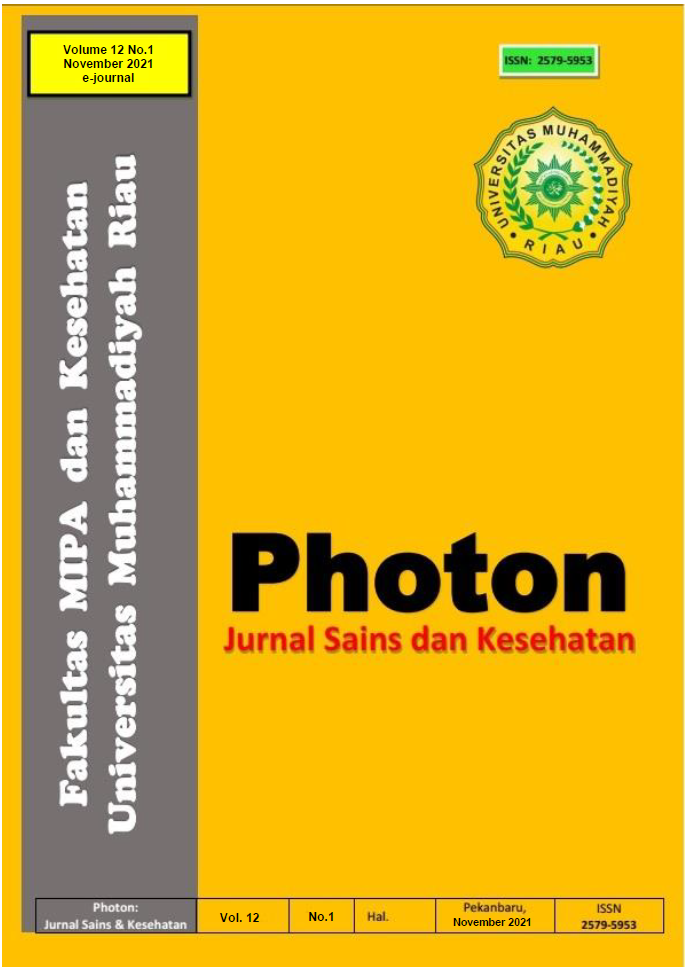Dukungan Suami Terhadap Penggunaan IUD Pasca Plasenta Sebagai Kontrasepsi Pasca Melahirkan
DOI:
 https://doi.org/10.37859/jp.v12i1.3363
https://doi.org/10.37859/jp.v12i1.3363
Abstract
Postplacental IUD is a post-partum contraceptive device that can be inserted directly in the first 10 minutes after the placenta is born. The low interest in post-placental IUD use is strongly influenced by husband's support. This study aims to determine the relationship between husband's support and the use of the postplacental IUD as a post-delivery family planning program. This type of research is analytic observational with a cross sectional approach. The sample of this study was 62 mothers giving birth at the Pratama Clinic Kusuma Medisca Wates taken by simple random sampling technique. The research instrument used a husband's support questionnaire. Data analysis was performed by Chi Square test. Maternal mothers who used the postplacenta IUD were more mothers who received husband's support (40.3%) compared to mothers who did not receive husband's support. Statistical test results obtained p-value 0.000, prevalence rate 5.26 with a confidence interval range of 0.064-0.561. Conclusion: There is a significant relationship between husband's support and the use of the postplacental IUD as a postpartum contraception.
Downloads
References
Abraha, T. ., Belay, H. ., & Welay, G. . (2018). Intentions on Contraception Use and Its Assosiated Factors Among Postpartum Women in Aksum Town, Tigray Region, Northern Ethiopia: A Community-based Cross Sectional Study. BMC Reproductive Health, 15(188).
Anguzu, R., Tweheyo, R., Sekandi, J. ., Zalwango, V., Muhumuza, C., Tusiime, S., & Serwada, D. (2014). Knowledge and attitudes towards use of long acting reversible contraceptives among women of reproductive age in Lubaga division, Kampala district, Uganda. BMC Research Notes, 7(153).
B, R., Shivakumar, & Paprikar. (2019). To Study the Safety and Efficacy of Post-Partum Intra-Uterine Contraceptive Device. International Journal of Research & Review, 6(10), 2237–2454.
Batubara, S., & Utami, R. (2019). Faktor-Faktor Yang Berhubungan Dengan Kesediaan Ibu Bersalin Untuk Pemasangan IUD Post Plasenta. Jurnal Penelitian Kebidanan Dan Kespro, 1(2).
BKKBN, RI, K., POGI, IDI, IBI, PKBI, & PKMI. (2014). Buku Panduan Praktis Pelayanan Kontrasepsi. PT Bina Pustaka Sarwono Prawirohardjo.
Da Costa, V., Ingabire, R., Sinabamenye, R., Karita, E., Umotoni, V., Hoagland, A., Allen, S., Mork, E., Parker, R., Mukamunyango, J., Haddad, L., Nyombanyire, J., & Wall, K. . (2019). An Exploratory Analysis of Factors Associated with Interest in Postpartum Intra Uterine Device Uptake Among Pregnant Women and Couples in Kagali, Rwanda. Clinical Medicine Insight: Reproductive Health, 13(1).
Diallo, M., Daff, H. M. ., Diouf, A. ., Niass, A., Toure, Y., Fall, K., & Al, E. (2019). Intrauterine Device in the Immediate Postpartum: Study Comparing Insertion after Cesarean Section and Vaginal Delivery. Open Journal of Obstetrics and Gynecology, 9, 1510–1518.
Faridah. (2014). Faktor Yang Mempengaruhi KB MKJP. Ejournal.Unair.Ac.Id.
Fithriany. (2011). Pengaruh Karakteristik Ibu dan Dukungan Suami Terhadap Pemeriksaan Kehamilan di Kecamatan Kuta Cot Glie Kabupaten Aceh Besar. Universitas Sumatera Utara.
Hartanto. (2004). Keluarga Berencana dan Kontrasepsi. Sinar Harapan.
Kanakuze, C., Dan, K., Musabirema, P., Pascal, N., & Mbalinda, S. (2020). Factors Assosiated With The Uptake of Immediate Postpartum Intrauterine Contraceptive Devices (PPIUD) In Rwanda: A Mixed Methods Study. Research Square.
Kemenkes, R. (2019). Laporan Nasional RISKESDAS 2018. Kementerian Kesehatan RI.
Kemenkes, R. (2020). Profil Kesehatan Indonesia Tahun 2019. Kementerian Kesehatan RI.
Mujiati, I. (2013). Pelayanan KB Pasca Persalinan dalam Upaya Mendukung Percepatan Penurunan Angka Kematian Ibu. Buletin Jendela Data Dan Informasi Kesehatan., 1, 11–16.
Notoatmodjo, S. (2015). Pendidikan dan Perilaku Kesehatan. Rieneka Cipta.
Qomariah, L. (2017). Hubungan Dukungan Suami dan Tingkat Pengetahuan Dengan Penggunaan KB IUD Postplacenta Di Puskesmas Jetis Yogyakarta. Universitas ’Aisyiyah Yogyakarta.
Risnawati, S. (2019). Faktor Yang Mempengaruhi Minat Ibu Menggunakan KB Intra Uterine Device (IUD) di Puskesmas Binjai Estate Tahun 2019. Institut Kesehatan Helvatia Medan.
Setiawati, E., Handayani Oktia, W. ., & Kuswardinah, A. (2017). Pemilihan Kontrasepsi Berdasarkan Efek Samping Pada Dua Kelompok Usia Reproduksi. Unnes Journal of Public Health, 6(3).
Sridevi, R., & Thilagam. (2019). Acceptability and Uptake of Immediate Postplacental Insertion of Intrauterine Contraceptive Device (Copper-T)- A Cross Sectional Study. PARIPE2019X - INDIAN JOURNAL OF RESEARCH, 8(11).
Downloads
Published
How to Cite
Issue
Section
License
Each article is copyrighted © by its author(s) and is published under license from the author(s).
When a paper is accepted for publication, authors will be requested to agree with the Creative Commons Attribution-Noncommercial-No Derivative Works 4.0










